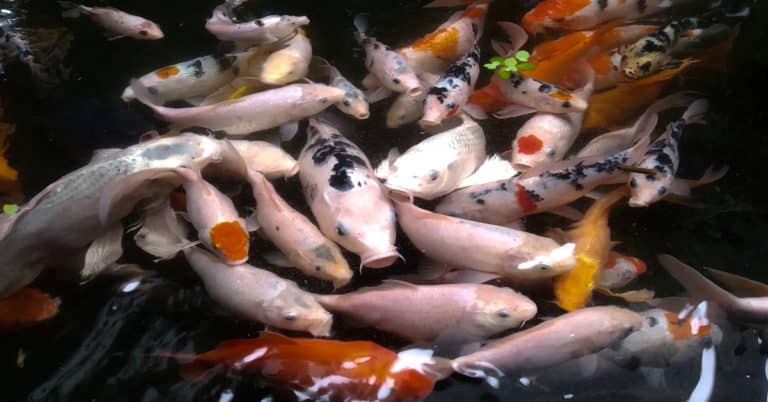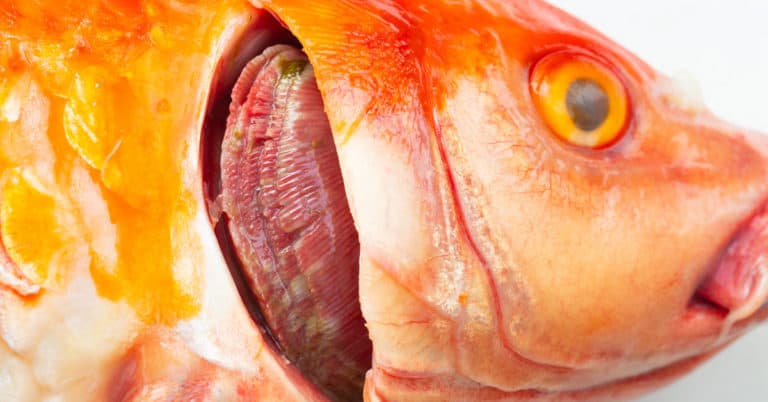Do you like Koi fish, own Koi fish, or otherwise want to know everything you can about Koi fish? Well, you're on the right site! This specific article will go into detail about the anatomy of Koi fish mouths.
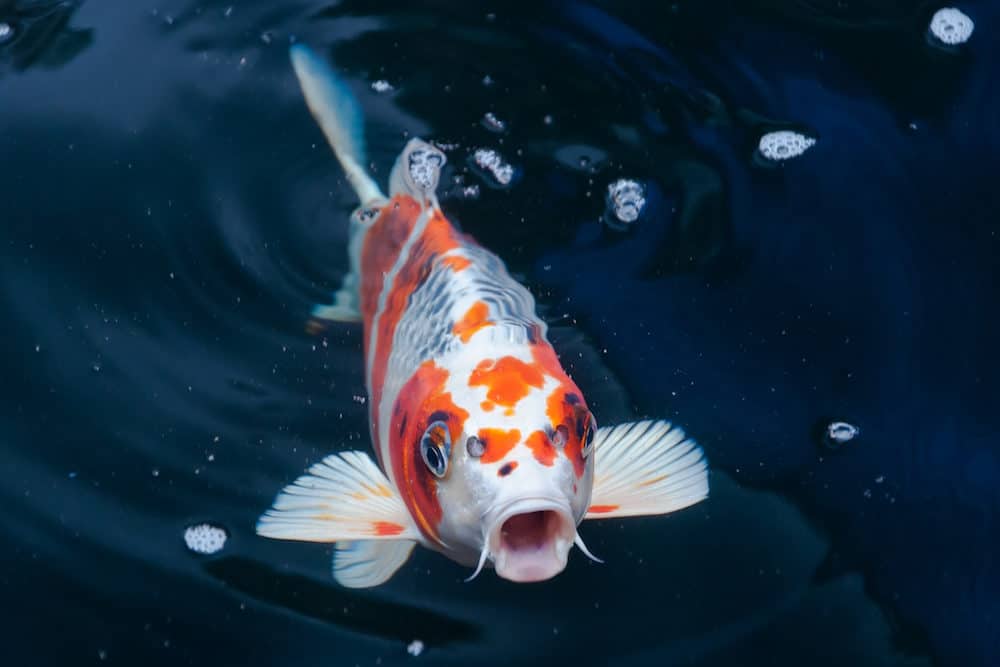
Koi are benthic feeders, so their mouths are designed for bottom feeding. This shape is why their mouths are protrusive and open wide.
Additionally, since they eat food from the bottom of the koi pond, their mouths are positioned at the base of their heads. This positioning helps them scoop or suck up food. However, their mouth functionality is versatile, allowing them to suck up food at the middle and top of the pond.
Read on to learn more about Koi fish mouths and their intriguing features.
Koi mouths have pressure sensors over their lips, head, and barbels, and a large amount of these sensors are on the lips and inside the mouth. Koi fish Barbels are one of the most defining characteristics of Koi fish.
Like other Cyprinus Carpio, otherwise known as common carp, Koi have barbels. Barbels are muscle-controlled areas that hold many sensitive taste buds.
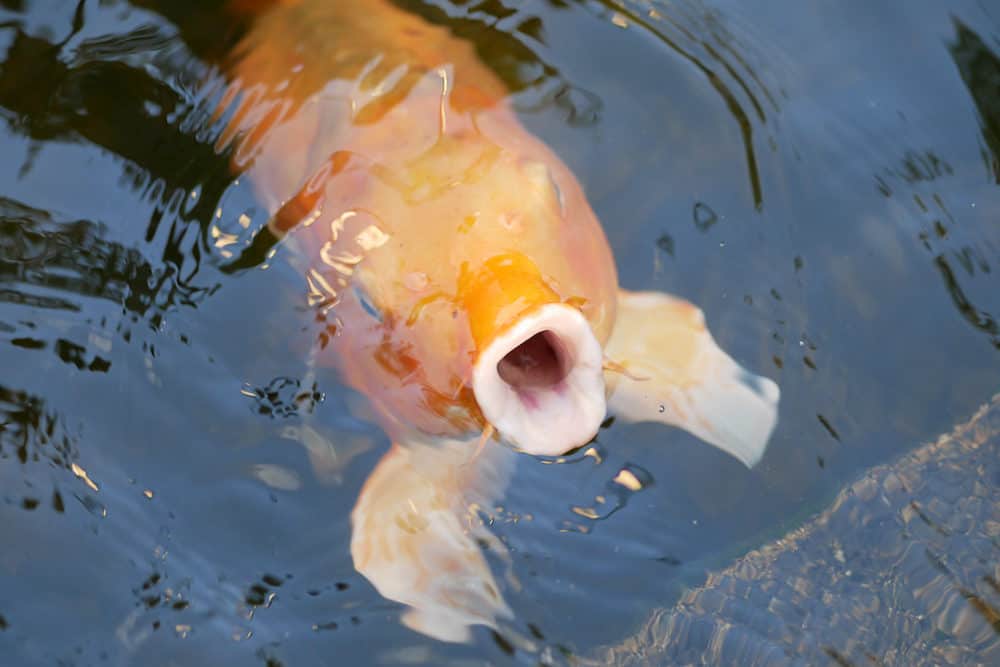
Koi have four barbels total. They have two barbels on each side of their mouth. These barbels have special sensory cells that help Koi fish decide whether they want to eat something after they've tasted it.
Because they evolved in murky water, with all sorts of inedible debris, they developed this valuable feature to taste something they sense in the water without actually ingesting it.
Koi do not have teeth in what humans would consider their mouth - or between their jaws. Instead, Koi fish have three rows of paired pharyngeal teeth behind their gill chambers.
In other words, their teeth are located in their pharynx, otherwise known as the throat. These pharyngeal teeth are attached to the pharyngeal bone.
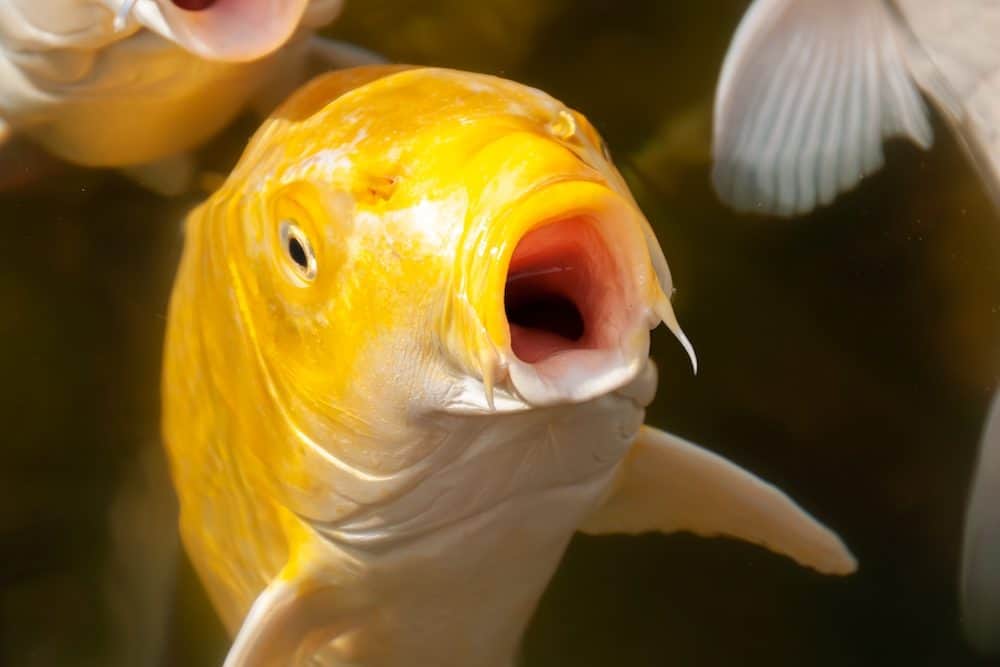
This teeth placement makes it easier for Koi fish to take in a large amount of food. Why? Because they don't necessarily have to swallow it all at once.
The pharyngeal teeth help process the food before digestion. There's a stone-like plate called the carp stone at the roof of their throats. Their teeth grind on that plate to help process some of the food while storing the other food.
Other types of freshwater fish and pond fish also have this teeth placement, such as gold fish, ornamental Koi carp, and loach.
Another unique aspect of Koi fish teeth is that in addition to grinding their teeth to chew their food, they also grind their teeth to communicate with one another.
If you have ever owned Koi fish and wondered what the tiny white specs were at the bottom of the tank - those are most likely Koi fish teeth.
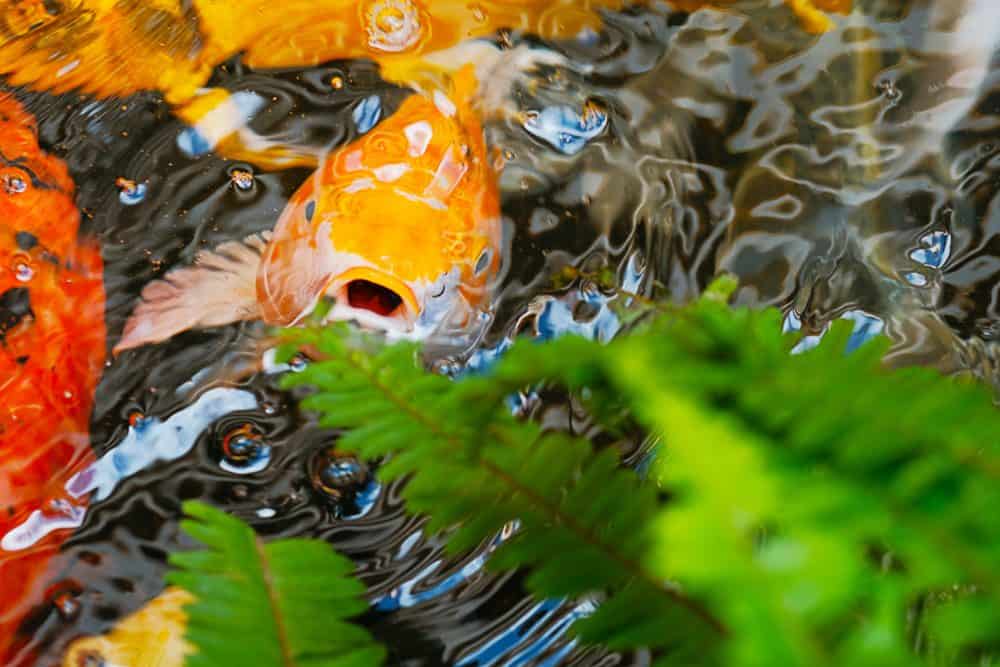
In the spring, Koi fish shed their teeth. There is not a systematic method to this madness. They simply shed their teeth when the teeth are old and not working as well. Sounds pretty reasonable to me!
Some Koi fish eat softer food while waiting for their mouths to replace old teeth with new and improved ones. Others prefer to just starve for this two to three-day period.
If I were a Koi fish, I would undoubtedly choose softer foods than nothing at all!
Since Koi fish like to suck in a lot of food at once, it helps them to be able to open their mouths so wide.
However, it’s not all about volume. Sometimes, it's about skill ad strategy. Koi fish also open their mouths wide to catch insects they want to eat before those insects can escape.
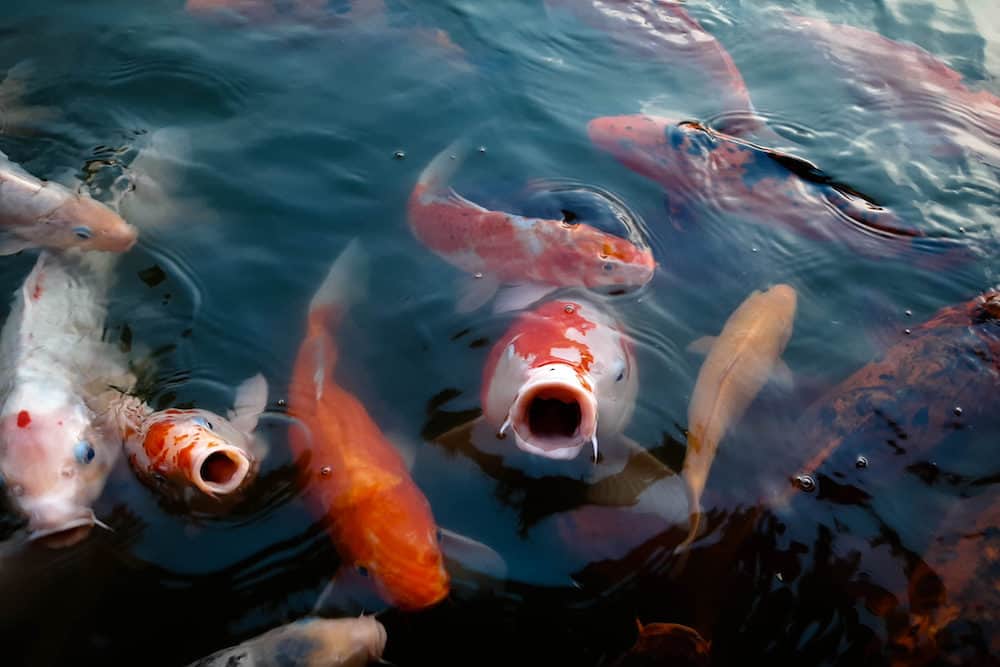
There are several interesting reasons why Koi fish open their mouths, including some you may have never guessed!
The first reason is the most obvious because humans open their mouths for the same reason - to eat food. Koi grow quickly with proper care and feeding.
Humans seek with their eyes. Koi fish use their mouth sensors to help them hunt for food as well.
Koi fish also open their mouths to get attention. This movement especially happens when it has been learned.
They will likely continue to do so if they know they can get attention (and perhaps more food) from simply opening their mouths towards their owner. This action is similar to a dog panting, whining, or wagging its tail for attention.
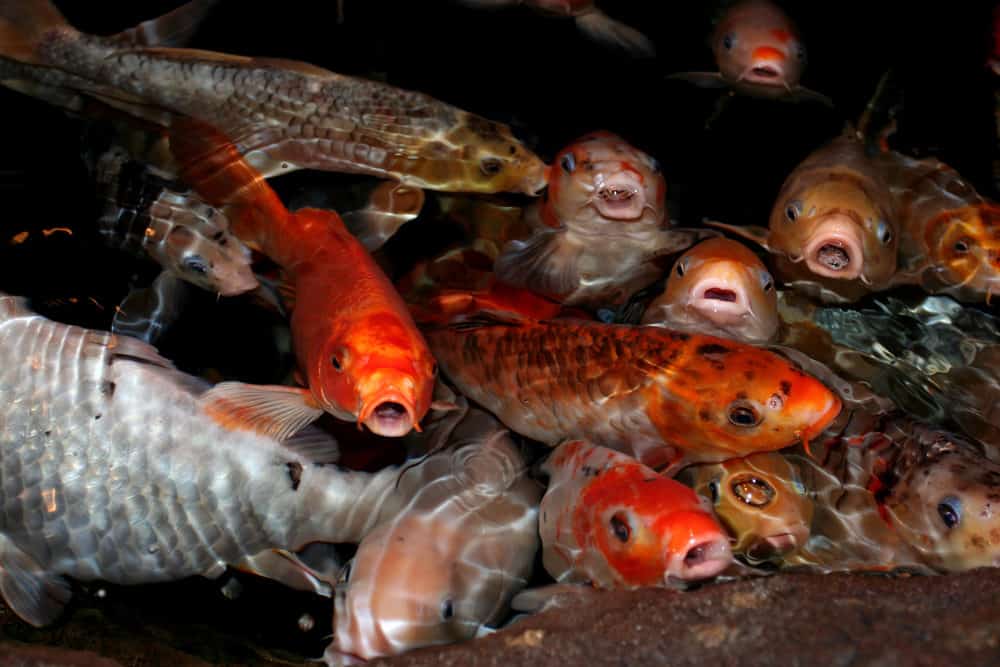
As mentioned, Koi fish mouth sensors help them hunt for food, but they also generally help them sense what's around them. More importantly, these sensors let them know what to avoid entirely, whether that's large objects, dangerous items, or oncoming predators.
Humans often use their hands and eyes to test out an object and understand what it is. This behavior is especially true for food. We don't want to put the wrong thing in our mouths mistakenly!
Koi fish, however, use their mouths to experiment. They can both taste and feel an object and decide whether it is edible. If it's proven inedible, they'll quickly spit it out. Yuck!
This behavior may seem ridiculous to us humans, but it is a beneficial strategy for Koi fish.
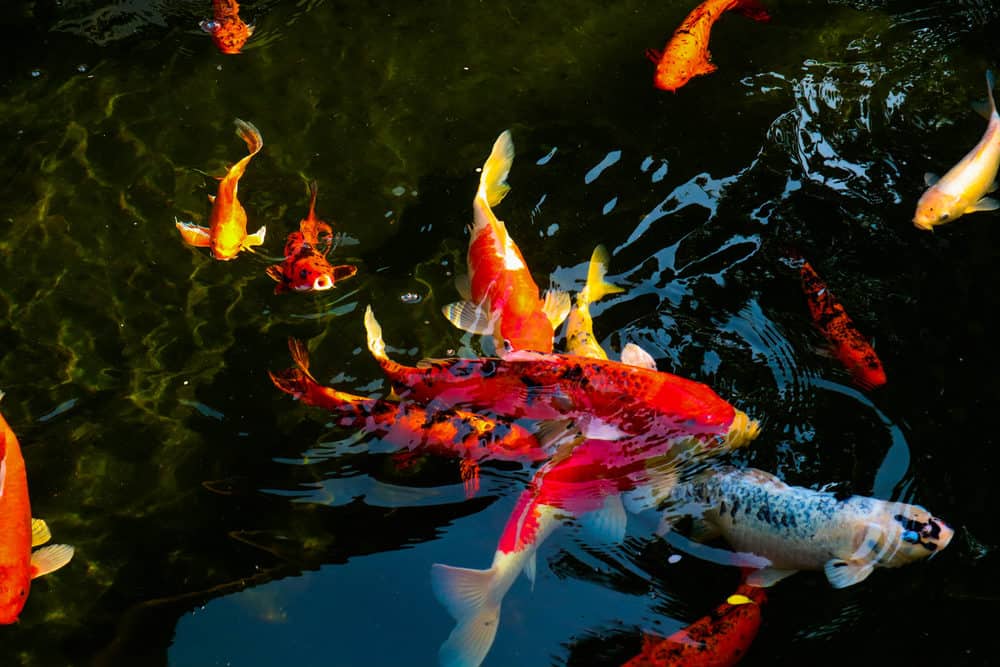
Because Koi tend to open their mouths wide, they put themselves at risk of opening so broad that they cannot shut them completely. Most Koi owners might overlook this issue at first, seeing as they may be used to their Koi gawking at them with a wide mouth.
However, if an owner notices that a Koi fish has had its mouth opened for too long, they should intervene by fixing the displaced jaw.
If you notice that your Koi has been swimming around with its mouth stuck open, something might be wrong. Talk to an exotic vet or Koi breeder to see if they can help determine the cause.
Here are some of the most common causes of Koi mouths getting stuck open.
As mentioned, a displaced jaw might make it difficult for a Koi fish to close its mouth.
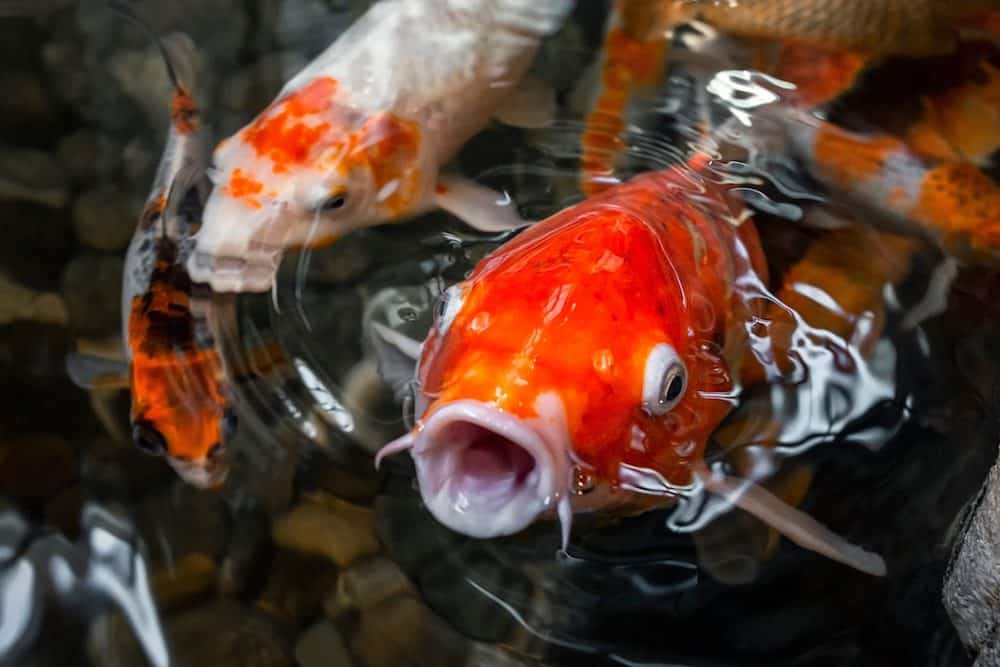
Another reason a Koi fish might have trouble closing its mouth is because of an ulcer, or perhaps an abscess, in the roof of the mouth.
Problems with mouth closing could also be due to a blockage by a foreign object. Foreign objects that can get into a Koi fish's throat include:
Bacterial infections can damage ligaments and gills, making it difficult for the affected fish to open or close their mouths. Read on to uncover more details regarding how to handle infected Koi.
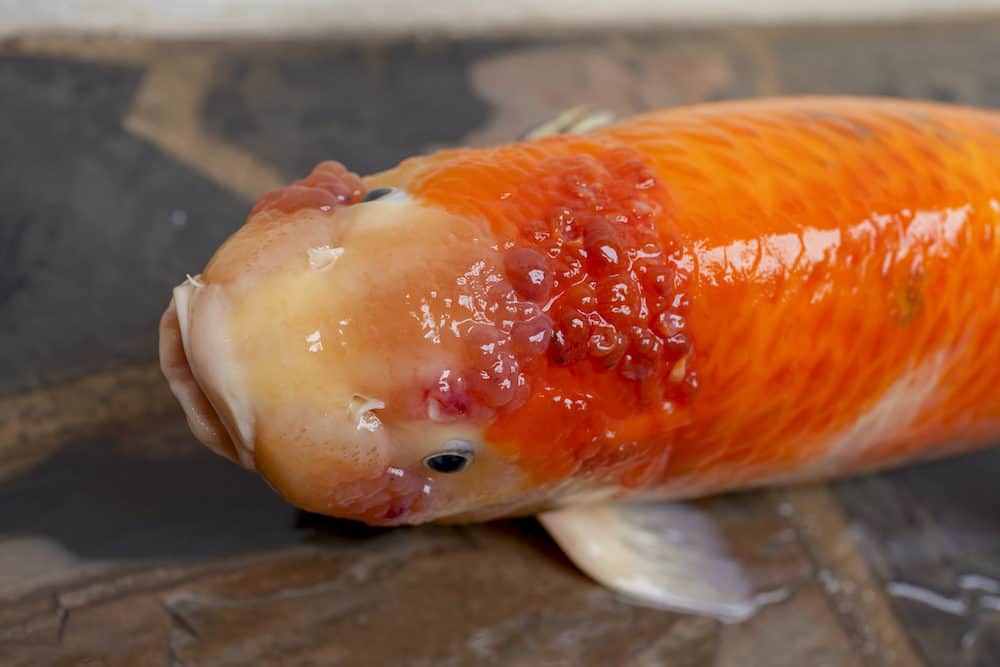
Bacterial infections of the mouth can be mild or severe. Antiseptic and bactericidal products can help alleviate local bacterial infections of the mouth or minor parasites with mild infections.
With severe infections or infections that have not had early intervention, damage to the mouth and jaw may occur. This occurrence is especially likely if the bacterial infection penetrates past the skin.
Mouth sores are a condition that may occur due to poor water quality. You can treat the sores with iodine or hydrogen peroxide, but you should also make sure to improve the quality of water in the pond or tank.
If the infection is too grave to be treated by a course of antibiotics, and it has affected the Koi fish to the point where it cannot functionally use its mouth, an owner might decide to euthanize the infected fish through sedation.
If columnaris bacteria develops because of mouth sores or some other type of infection or condition, this may be fatal to your Koi fish.
Overall, this is why it is necessary to keep an eye out for your Koi fish and make sure they are in a healthy environment.
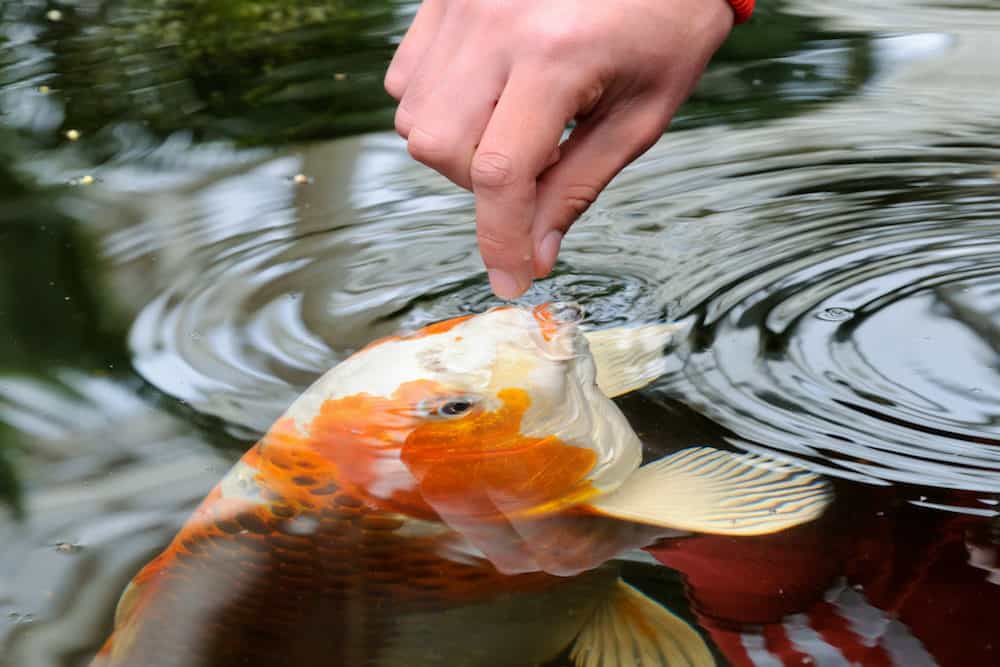
Since their teeth are in their throats, they can pull or suck your hand while feeding, but they can't bite. Remember, they taste before they eat, and you probably don't taste very delicious to them anyway!
Many fish tank or backyard pond owners wonder if they can keep Koi fish, which are relatively large, in the same water as other types of aquatic life. Koi fish rarely have small goldfish on their menu, but they will likely not eat giant goldfish.
They are more likely to eat tadpoles, fry (baby fish), snails, and any insect that happens to enter the tank or pond water.
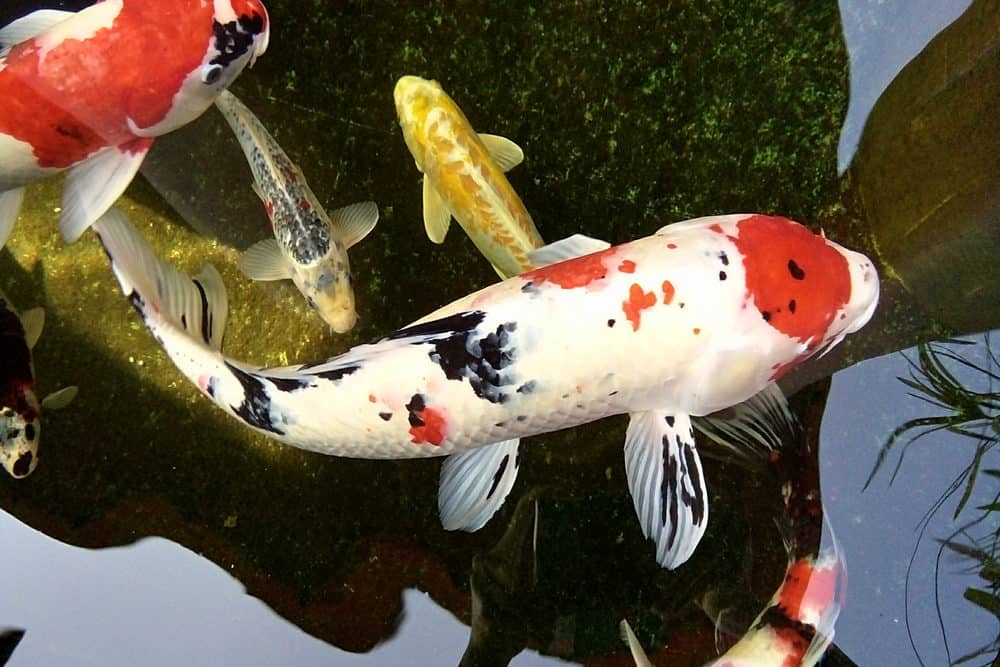
As you may know, there are many Koi fish varieties, including but not limited to Gosanke Koi fish, Karasuh Koi fish, Asagi Koi fish, Albino Koi fish, Koromo Koi fish, etc. All of these Koi fish have very similar mouth anatomy as described within this article.
However, some Koi fish have an additional feature: mouth-brooding. This feature means that they can hold fertilized eggs in their mouths until they are ready to hatch. The Krabi Mouth-Brooding Betta and the Betta Pugnax are two kinds of Koi fish that do this.
The koi fish mouth is constructed in such a way to help them navigate through their environment whether it is to determine what is edible in the pond water or perhaps to warn them if they are in danger from a hungry predator, such as a larger fish or a species outside the pond.
Maintaining a pond with proper water quality and optimal oxygen levels can be the difference between a sick koi and a pond full of healthy fish. Certain Koi fish diseases can be prevented...keep a sharp eye out for changes in the appearance of your koi's mouth.


